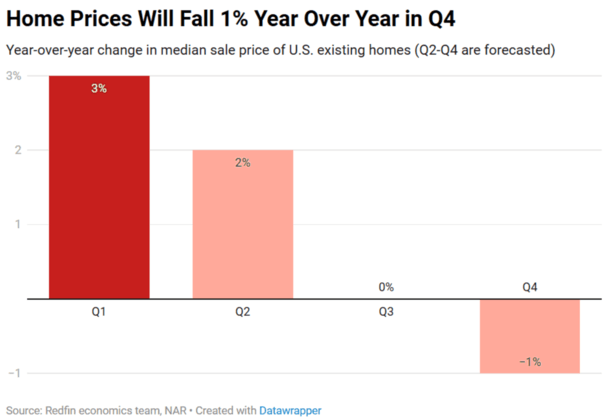Today we’ll take a look at the top mortgage lenders in Ohio.Last year, nearly 900 mortgage companies originated about $42 billion in home loans there, a far cry from the $113 billion seen back in 2021.But one company beat the rest despite not being the top-10 overall.Surprisingly, it wasn’t the nation’s top mortgage lender, but rather a depository bank.Read on to see who took the top spot and what other companies did a lot of business in The Buckeye State.Top Mortgage Lenders in Ohio (Overall)RankingCompany Name2024 Loan Volume1.Huntington Bank$2.8 billion2.Rocket Mortgage$2.5 billion3.CrossCountry$2.2 billion4.UWM$1.9 billion5.Union Savings Bank$1.1 billion6.Fifth Third Bank$1.1 billion7.Union Home Mortgage$967 million8.Chase$869 million9.Guaranteed Rate$791 million10.Veterans United$784 millionThe top mortgage lender in Ohio last year was Huntington Bank, a company founded all the way back in 1866.In 2024, the Columbus, Ohio-based company funded $2.8 billion in home loans, per HMDA data from Richey May.For the record, they funded $7.8 billion in 2021 when mortgage rate hit record lows!But it was still more than enough to hold off Rocket Mortgage’s $2.5 billion, the nation’s second largest mortgage lender overall.In third was Cleveland, Ohio-based CrossCountry Mortgage with $2.2 billion funded, followed by the nation’s largest mortgage lender United Wholesale Mortgage, with just $1.9 billion funded.Rounding out the top five was Ohio-based Union Savings Bank with $1.1 billion.Sixth was Cincinnati-based bank Fifth Third with a close $1.1 billion in loan volume, followed by Strongsville, Ohio-based Union Home Mortgage.The rest of the top 10 included Chase, Guaranteed Rate, and Veterans United.Many of the top lenders are Ohio-based, so it seems Ohioans like to keep it local when obtaining a home loan.Top Ohio Mortgage Lenders (for Home Buyers)RankingCompany Name2024 Loan Volume1.CrossCountry$1.9 billion2.Huntington Bank$1.7 billion3.UWM$1.2 billion4.Rocket Mortgage$1.1 billion5.Union Savings Bank$889 million6.Union Home Mortgage$870 million7.Guaranteed Rate$725 million8.Fifth Third Bank$710 million9.Chase$708 million10.NFM$673 millionWhen it came to home purchase lending, CrossCountry Mortgage led the charge with $1.9 billion funded.They were followed by Huntington Bank, UWM, Rocket Mortgage, and Union Savings Bank (also headquartered in Cincinnati, Ohio).Places six through 10 went to Union Home Mortgage, Guaranteed Rate, Fifth Third Bank, Chase, and NFM.No big surprises here, with more local companies and big household names making the list.Top Refinance Lenders in Ohio (for Existing Homeowners)RankingCompany Name2024 Loan Volume1.Rocket Mortgage$1.3 billion2.Huntington Bank$939 million3.UWM$649 million4.Freedom Mortgage$357 million5.Fifth Third Bank$289 million6.Pennymac$233 million7.CrossCountry$221 million8.PNC Bank$220 million9.Union Savings Bank$216 million10.Veterans United$174 millionWhen we shift focus to mortgage refinance loans, Rocket Mortgage was king with $1.3 billion funded.Per usual, homeowners are happy to look at non-local options as they go for the lowest rate, or a cash out refinance, as opposed to a familiar face.In second was Huntington Bank with a distant $939 million funded, followed by UWM with $649 million.Freedom Mortgage came in fourth and Fifth Third came in fifth (confusing I know!)The remaining companies in the top 10 included Pennymac, CrossCountry Mortgage, PNC Bank, Union Savings Bank, and Veterans United.All in all, more of the same, Ohio-based mortgage companies and big national brands/banks.Top Mortgage Lenders in CincinnatiRankingCompany Name2024 Loan Volume1.UWM$493 million2.Union Savings Bank$424 million3.Rocket Mortgage$394 million4.Huntington Bank$342 million5.Fifth Third Bank$256 million6.Guaranteed Rate$237 million7.CrossCountry$179 million8.First Community$174 million9.Victory Mortgage$161 million10.LCNB Bank$148 millionTop Mortgage Lenders in ClevelandRankingCompany Name2024 Loan Volume1.CrossCountry$716 million2.Huntington Bank$565 million3.Rocket Mortgage$499 million4.Third Federal$318 million5.UWM$302 million6.Fifth Third Bank$234 million7.Howard Hanna$204 million8.First Federal Savings$193 million9.NVR Mortgage$179 million10.Chase$162 millionTop Mortgage Lenders in Columbus (OH)RankingCompany Name2024 Loan Volume1.Huntington Bank$650 million2.NFM$559 million3.UWM$508 million4.Rocket Mortgage$484 million5.CrossCountry$350 million6.Union Home Mortgage$349 million7.Chase$345 million8.Union Savings Bank$307 million9.M/I Financial$273 million10.Fifth Third Bank$254 millionWho Are the Best Ohio Mortgage Lenders?While the Huntington Bank was Ohio’s largest mortgage lender, its reviews are pretty mixed, with a lot of 3-star ratings across different review websites.It’s difficult to determine if that’s due to mortgage lending or other bank services offered by the company.Regardless, there are other mortgage companies in Ohio with far superior ratings, even if they aren’t as large.For example, CrossCountry Mortgage has an excellent 4.97-star rating on Zillow from a staggering 22,000 customer reviews.Meanwhile, Revolution Mortgage also has a 4.97 rating, Lower has a 4.93-rating, Union Home Mortgage has a 4.89-rating, and Nations Lending has a 4.81 score.The highest rated Ohio-based mortgage company on Zillow is a tie between American Mortgage Service Company and Equity Resources, Inc., both with a 4.98 score.So it’s clear there are plenty of highly-rated Ohio mortgage companies that aren’t necessarily the biggest of the bunch.At the same time, you may also find that working with a mortgage broker or local credit union is the way to go.Regardless of what option you choose, do your research and take your time to ensure you obtain quality service at a competitive price.(photo: tlarrow) Before creating this site, I worked as an account executive for a wholesale mortgage lender in Los Angeles. My hands-on experience in the early 2000s inspired me to begin writing about mortgages 19 years ago to help prospective (and existing) home buyers better navigate the home loan process. Follow me on X for hot takes.Latest posts by Colin Robertson (see all)


